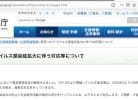According to the Japan Patent Office (JPO), methods for treatment of the human body by surgery or therapy and diagnostic methods practiced on the human body fall outside the scope of “industrially applicable inventions” and are, therefore, unpatentable. In only a few nations are such claims permissible, the U.S. being one of them.
What is different between patentable medical methods claims in the USA and Japan?
To clarify, these types of claims can be further understood as follows:
(1) “Methods for surgery practiced on humans” include cosmetic surgery whose purpose is not therapeutic or diagnostic, as well as preparatory treatment for surgery such as anesthetic treatment.
(2) “Methods for therapeutic treatment practiced on humans” include methods of giving or injecting medicine for curing or inhibiting a disease, physical therapy, and preventive methods against diseases such a fluoride to prevent tooth decay.
(3) “Methods for diagnosis practiced on humans” include methods for measuring the shape of an internal organ or detecting disease by measuring the internal or external condition of a patient.
The following are examples of medical invention claims that are permissible in Japan:
(a) Medical device or medical substance is a product and is not considered a method of treatment. However, a surgical method using such a surgical device (for example a scalpel) or a method of treatment using such a medicinal substance is considered a method claims.
(b) Methods for treating samples that have been extracted from the human body (that is, blood, urine, skin, hair, cells or tissue) and methods for data by analyzing them are not considered method claims. However, if a method for treating these samples is performed on the presumption that they will be returned to the same body, then such methods qualify as a methods claim.
(c) Methods for manufacturing a medicinal product (for example blood preparation, vaccine), or medical material (such as an artificial substitute or alternative for a part of the human body like bones, cultured skin sheets) by using raw material collected from the human body is not considered a method for treating the human body, even if the material was collected from a human being, based on a supposition that the material will be returned to the same person as part of his/her medical treatment.
Could I convert Medical Method Claims to please a Japanese examiner?
One way of getting around the medical method claims issue when filing and translating into Japanese is to rewrite it as a “second medical use claim.” A second medical use claim is when a known substance or pharmaceutical composition is used for a new and inventive therapeutic application taking the format “substance-A used for the treatment of disease-Y.” Another alternative is to convert method claims into “Swiss-type claims” which takes the format “use of substance-X in the manufacture of a medicament for the treatment of condition-Y.” Both are permissible under the Japanese law so long as the method of treatment is not a “pure” treatment method. In other words, if it is a pure treatment, as is the method of removing a cyst from the human body, or the method of using a scalpel during surgery, there is no room to manipulate the claims so as to convert them into something else.
Other strategies to sidestep the methods claims issue is to rewrite them as nontreatment method, apparatus, or systems claims.
Note that even if the method of treatment claims are converted to second use, apparatus or system claims, this will not in any way limit the freedom of medical practitioners in their treatment practice of patients.
Might the JPO loosen standards to keep up with developments?
Recently, the demand to amend the current law has been increasing in order to protect “rapidly developing regenerative medicine” and “gene therapy-related technologies” properly.
In regards to this matter, JPO is deliberating on whether to make an amendment to the current law.
* The information provided on this website is for informational purposes only and is not intended as legal advice.
** For questions or consultation, please contact Taro Yaguchi or our firm for more information.
By Toyomi Ohara, Patent Agent
(Updated February 13, 2023)
Header image by Tatiana from Pixabay






